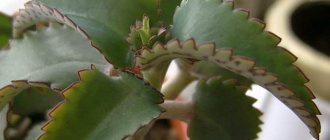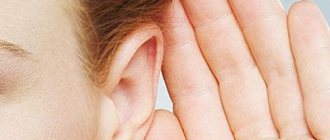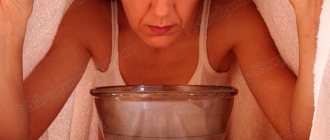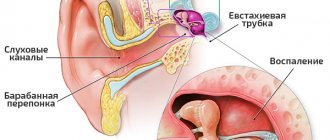Warm-up efficiency
- under the influence of heat, blood vessels dilate and blood circulation is activated;
- congestion in the mucous membrane decreases;
- metabolism improves and tissue swelling decreases;
- the regeneration of damaged mucosal cells is accelerated.
This procedure is recommended by doctors for severe nasal congestion or swelling. After warming up, nasal breathing improves and the patient can breathe easier. In addition, dry heat applied to the face has a beneficial effect on biologically active points that are responsible for the functioning of the respiratory, nervous, and cardiovascular systems.
The healing effect of warming up
When a warm object is applied to an area of skin, its temperature rises, and this, in turn, affects the course of the inflammatory process. As a result of such procedures, the following effect is observed:
- Improved metabolism - blood vessels dilate, and blood begins to circulate better and nourish the cells of the mucous membrane.
- Elimination of pathological swelling of mucous tissues.
- Reduced amount of mucus produced.
- Accelerated growth of new mucosal cells.
- Restoring free nasal breathing.
Most often, salt is used at home to warm the nose. It is on sale and is cheap. It has not been scientifically proven, but the steam emitted by salt is believed to kill germs. The procedure performed before bedtime has a great effect. By facilitating breathing and relaxation, you can fall asleep faster and sleep peacefully throughout the night.
The miraculous power of heat has a beneficial effect on the condition of all respiratory organs, it helps relieve nervous tension and, along the “chain,” activate the immune system. Warming has a local effect (relieving swelling, restoring the nasal mucosa) and affects the entire body as a whole.
Folk recipes
Among the accessible and effective methods of warming up the sinuses, there are several recipes familiar to everyone since childhood. Because there is hardly a person in the post-Soviet space whose mother or grandmother did not treat a runny nose with a warm egg or a sock with salt as a child. However, for those who have passed this fate, here are recipes that can help speed up the process of getting rid of a runny nose in its early stages.
Recipe No. 1. Warming up with salt
Heat coarse rock salt, or sea salt, in a dry, clean frying pan to a temperature of 45–50 degrees. Pour the salt into a linen bag or warm sock and apply it to your nose. In order for the procedure to be doubly effective, you can use two compresses with salt at the same time, placing them at the wings of the nose, on the maxillary sinuses. The compresses can be moved, directing the healing power of dry heat to where it is needed, on the frontal sinuses or the bridge of the nose.
You can keep the compress with salt for 10 - 15 minutes; when it cools down, you can put the bags on the radiator to use them at any time.
Recipe No. 2. Warming up with an egg
The principle of operation of this compress is the long-term cooling of a hard-boiled egg, which gives off its uniform heat, warming up the sinuses. To carry out this procedure, hard-boil 2 chicken eggs and wrap them in flannel cloth or a handkerchief and place them on both sides of the nose. When the egg compress has cooled, you should go to bed for at least half an hour.
Recipe No. 3. Rye flour flatbread with honey
Honey and flour are mixed equally and heated in a water bath until a thick, warm mass is formed. Then the resulting dough is kneaded into a flat cake that will cover not only the nose, but also the maxillary sinuses. Apply a honey-rye cake to the skin previously lubricated with cream. To prevent the compress from cooling too quickly, cover it with cellophane.
Blue lamp
In addition to available means for warming the nose, they use the heat of a blue lamp or a Minin reflector. Unlike ultraviolet, the blue lamp does not have disinfecting properties. Its soft and even heat warms the skin without leaving burns and does not harm vision. When using a strong lamp, blood circulation accelerates, symptoms of pain and swelling are relieved, metabolic processes are accelerated, and along with this, tissue regeneration.
The minimum duration of the procedure is 5 minutes, the maximum is 30 minutes. After the procedure, the area of skin that was exposed to heat should be wiped with a damp cloth, then dry, and then lubricated with baby cream.
Young children, like no one else, are susceptible to colds and runny nose. In order for a runny nose to go away without complications at its first symptoms, you can use warming.
- It is better to warm up with a Minina reflector while the child is sleeping, covering the eyes with a diaper and turning on the lamp for 7 - 10 minutes.
- Salt warming is also effective in treating rhinitis in children. Before making a compress, be sure to measure the child’s body temperature; if it is above 36.7 degrees, the procedure should be abandoned.
- To ensure that the baby is not afraid of the salt compress and willingly holds it to his nose, you can sew special bags in the shape of fairy-tale characters, owls, mice or bunnies. Then the procedure will be fun and useful.
- Before applying the compress, you need to give it to the baby so that he gets used to the temperature, then you can invite him to apply the bag to his nose himself.
- After the baby has warmed up his nose, he should be put to bed and covered with a warm blanket.
If you are not sure that the runny nose has not turned into a bacterial form, any thermal procedures should be postponed until consulting a doctor.
How to properly warm your nose when you have a runny nose using folk remedies
When a runny nose occurs, we immediately resort to warming up. But then suddenly the question arises about the correctness of this procedure. In this article you will learn how to warm your nose when you have a runny nose and with what means this is done.
Warming with rye cakes and honey is very effective for a runny nose. In order to prepare these cakes, you need to take a teaspoon of honey, combine it with a teaspoon of rye flour. Then you should mix these ingredients and heat them in a water bath to body temperature. From this mixture you need to make small cakes and apply them to the maxillary or frontal sinuses. After this, cover them with plastic bags and warm your nose with them when you have a runny nose for about half an hour. After the time has passed, remove the cakes and apply either cotton wool or woolen cloth in their place and wait until the skin cools.
You can also treat with camphor oil. To do this, the oil must be heated in a water bath to about 40 degrees, and rub the bridge of the nose and sinus area with it. You should also apply heated oil to your feet and wear warm woolen socks. But they put cotton wool on the frontal and maxillary sinuses and keep it there for as long as possible.
If you believe more in traditional medicine, then you can warm your nose when you have a runny nose using traditional products: buckwheat or sand. One of these products must be heated in a frying pan, then poured into a bag or cloth and warmed up the maxillary sinuses for no more than half an hour.
The most common method of treatment is heating with boiled eggs. Wrap a freshly boiled egg in a cloth and warm your nose when you have a runny nose by applying the egg to your sinuses. Once it has cooled, throw it away and never eat it.
Heating also helps with a runny nose, which relieves swelling. You need to heat coarse salt in a frying pan and pour it into a bag, or as our mothers and grandmothers did, into a sock. The bag of salt should be applied to the nose and bridge of the nose.
An important point during treatment is to constantly stay warm and prevent hypothermia, especially of the legs. It is also effective to warm your feet in a bath or bowl.
In addition to warming your nose and feet, you can apply boiled and halved potatoes to your chest. You need to wrap something warm on top and carry out the procedure for at least 20 minutes.
Buy pine oil at the pharmacy. Rub your nose, back, legs with this oil, then dress warmly and wrap yourself in a blanket.
It is necessary to pour half a glass of millet or buckwheat into the frying pan and ignite thoroughly. Then, pour the cereal into a bag, after cooling. After pouring into the bag, cool again to the temperature most suitable for you. Place this bag on the bridge of your nose for ten minutes. It is necessary to repeat three times, one of which is immediately before bedtime.
To get rid of the disease, you can wear “mustard socks” at night. Before going to bed, you need to drink a glass of hot milk with honey, to which you can also add a little soda.
A runny nose often begins when the feet are overcooled. This is due to the fact that the projection areas of all organs are located on the feet. If you suspect that your feet are cold or wet, you should immediately take a hot bath or make a mustard bath specifically for your feet. You can add a stick of pine extract to it. In addition, it is useful to massage your arms, neck and chest before going to bed.
Rules for the procedure
How to properly warm your nose? The therapeutic effect is achieved by following certain rules:
- warming will help get rid of mucus accumulations only if adequate outflow is ensured for it;
- After warming up, it is not recommended to go out into the cold for an hour;
- During the warming process, you need to monitor the condition of the skin. If a burning sensation or intense redness of the skin occurs, you should stop the procedure and wrap the bag of salt with additional cloth. This will help avoid skin burns;
- After the procedure, hyperemic areas of the skin should be lubricated with baby cream.
Before warming, it is recommended to clear the nasal passages of mucus accumulations by rinsing with a saline solution.
Thanks to the preliminary cleansing of the mucous membrane from dust, mucus and toxins, the effect of the procedure becomes much stronger. Washing can be carried out using solutions with sea salt Aqua Maris, Salin or Humer. At home, you can dissolve table salt (7 g) in 300 ml of warm water.
To prevent a runny nose, you can use oxolinic ointment, which should be used to lubricate the nasal mucosa before going outside or communicating with a sick person. In addition, do not forget about a healthy diet, strengthening the immune system and timely treatment of chronic infectious diseases.
Remember, heat exposure as an independent treatment cannot lead to complete recovery. It is advisable to combine treatment methods and begin to act as soon as the first symptoms of the disease appear.
Mucus from the nose and difficulty breathing can be cured by various methods, but there is one recipe, the benefits of which have been proven over the years. Heated salt for a runny nose can reduce the unpleasant symptoms that occur with a runny nose and improve the patient’s condition. The procedure can be carried out with various cereals, but it is salt that can quickly eliminate all acute signs of the inflammatory process in the nasal cavity. The procedure should be carried out not only for acute rhinitis, but also in case of a common runny nose due to hypothermia or trauma.
You need to know that warming the nose with salt can eliminate the symptoms of the disease only at the initial stage of the inflammatory process. In case of prolonged or allergic rhinitis, this procedure will be useless. When preparing for heat therapy, it is necessary to know exactly the mechanism of its implementation. Otherwise, severe complications may develop, including inflammation of the brain.
Reflector (blue lamp) “Clear Sun”
An excellent remedy for treating a runny nose is a blue lamp that emits dry heat and infrared light. The device is easy to use, which is why it is so popular. The device is perfect for use at home.
People of all age categories can be treated with it. The reflector has a minimum of contraindications, which is its advantage. It should not be used by people suffering from cancer. Also, you should not resort to treatment with a blue lamp at elevated temperatures.
Using the above-mentioned devices, you can quickly get rid of a runny nose, which causes many problems. But when choosing a device, do not forget about the contraindications that almost each of them has. It is best to consult a doctor before use, who will advise the best option for treating a runny nose and other colds.
Source: gaimoritus.ru
Warming up the nose recipes and rules
One of the effective methods for treating a runny nose during a cold is considered to be warming the nose. For a speedy recovery, experts advise combining warming the nose with rinsing it and taking medications.
Dry heat is used to warm the nose and it is best to carry out the procedure before bed.
Traditional medicine offers the following recipes for warming the nose with a runny nose:
- A good effect is achieved by using table salt, which must first be heated well in a frying pan and placed in a small fabric bag. In addition, you can use sea salt or buckwheat, which are pre-heated over a fire. The bag must be tied and applied to the bridge of the nose for 15-30 minutes. After the procedure, it is recommended to lie down for at least another half hour.
- One of the most common methods for warming up the nasal cavity for rhinitis is boiled eggs. To do this, freshly boiled eggs must be wrapped in cloth and applied to the sinuses. After the egg has cooled, it should be thrown away, but under no circumstances should it be eaten.
- Traditional medicine suggests using flatbreads made from rye flour and honey to treat nasal congestion. To do this, mix two ingredients in equal proportions and the resulting mass is slightly heated in a water bath. After this, you need to make a cake from the dough and apply it to the area of the maxillary sinuses. This cake should be kept for about 20-30 minutes, covering it with a plastic bag on top. After the time has passed, the cake can be removed from the face and covered with a woolen scarf until the skin cools completely.
For a speedy recovery from a runny nose, it is recommended to warm up not only the nose, but also the feet. To do this, pour hot water into a small container so that your legs are covered up to the knee. To enhance the warming effect, it is recommended to add a little mustard to the water. After the procedure, you need to massage the reflex points of the foot and drink tea with honey.
Contraindications to the procedure and advantages of the method
Warming the nose is an effective procedure for treating a runny nose, but there are limitations.
Many patients faced with colds and runny nose are tormented by the question of whether it is possible to carry out the procedure of warming up the nose. In fact, if the patient feels normal and there are no problems with his general condition, warming up the nose is allowed.
Contraindications to this procedure are:
- rise in body temperature with disruption of the patient’s general well-being;
- the appearance of nasal discharge mixed with pus.
In fact, warming with dry heat has the following beneficial effects on the patient’s body:
- helps reduce venous congestion in the nasal mucosa
- helps speed up metabolic processes
- reduces tissue swelling
- helps restore the condition of the nasal mucosa
- dilation of blood vessels occurs, which helps speed up the blood circulation process
- In a short time, a runny nose disappears and nasal breathing normalizes
A runny nose is considered an unpleasant pathological condition of the body, which causes discomfort to the patient.
Treatment of a runny nose using heating is recommended at the initial stage of development and combined with taking medications prescribed by a doctor.
A competent combination of drug therapy and folk remedies will speed up the healing process and strengthen the condition of the entire body.
How to warm your nose when you have a runny nose
A runny nose is an unpleasant symptom that significantly disrupts a person’s normal life.
Many people turn to traditional medicine for help in treating rhinitis. Warming the nose during a runny nose is one such method. Is it really effective and safe? If you read the reviews of those who managed to cure a runny nose with heat, it becomes obvious that this is an effective treatment method. Is it possible to warm your nose when you have a runny nose, and will it harm the blood vessels? These are common questions for many people. In fact, warming up has its contraindications; you should not warm your nose if you have a runny nose caused by sinusitis, sinusitis, or adenoiditis. Elevated body temperature is another factor that prevents such a procedure.
You can apply heat to the area of the paranasal sinuses during the first days of the disease, when the inflammatory process is just beginning to develop. A sign that the disease has not yet advanced is the color of the nasal discharge. They should be transparent with a liquid consistency without any admixture of pus. If you neglect this rule and warm up when you have a runny nose, such actions will intensify the inflammatory process and lead to the spread of infection.
Warming up the nose with a runny nose in children and adults
Warming up for a runny nose in children and adults can be done in several ways. When carrying out the procedure, various means can be used, such as:
In medical institutions, colds are warmed up with a blue lamp. This kind of physiotherapy can be carried out at home by purchasing a special device. The blue lamp produces infrared radiation that penetrates deep tissues. When warming the nose with a blue lamp, the following positive results are achieved:
- blood circulation improves;
- the walls of blood vessels are strengthened;
- pain decreases;
- some types of bacteria are destroyed;
- the process of cell regeneration is accelerated;
- nasal breathing is normalized.
When you have a runny nose, a blue lamp warms up the area of the bridge of your nose. The device must be held at a distance of at least 20 cm from the bridge of the nose. It must be adjusted so that a pronounced, but not burning, heat is felt. During the procedure, the eyes must be closed. The duration of one therapy session is 10 minutes; you need to warm your nose 2-3 times a day. By correctly using a blue lamp to warm the bridge of your nose, your runny nose will go away within 3 days.
How to warm your nose with an egg when you have a runny nose
If there is no blue lamp in the house, it can easily be replaced by other means. A boiled chicken egg is a good way to warm up the nose. The warm egg should be applied to the maxillary sinuses - the upper part of the nose. If you decide to warm your nose with an egg when you have a runny nose, consider these important recommendations:
1. Do not apply the hot egg directly to the skin; wrap it in a towel or napkin.
2. Warming up should be done several times a day, the last time before bedtime.
3. A used egg should not be eaten; it is better to throw it away.
This folk method of treatment will be effective only if the runny nose is caused by a cold. Rhinitis of viral and bacterial origin cannot be cured with heat.
How to warm a child’s nose when he has a runny nose: warming with a blue lamp
If you have a runny nose, you can warm your nose with salt; it has a good warming effect on the paranasal sinuses. To carry out the procedure you will need:
- coarse iodized salt;
- pan;
- two flannel bags.
To carry out the treatment procedure, heat the salt in a frying pan, pour it into two bags and tie it tightly. Then take a comfortable position, lie down on the bed with your back without a pillow, apply bags of warm salt on both sides of the wings of your nose.
The duration of the procedure is 10–15 minutes. At the end of the session, you must remain in bed for 30 minutes.
At this time, it is important that there are no drafts in the room
Warming a child’s nose with a runny nose using this method must be done very carefully so as not to burn the child’s delicate skin. For this purpose, it is better to apply the bags to the skin through a thin cloth.
Instead of salt, you can use sand or buckwheat, which are also heated in a frying pan.
Warming the nose with salt in combination with rinsing the nasopharynx with saline solution or chamomile decoction gives good results. After just a few procedures, the amount of mucus decreases and nasal breathing improves.
If you don’t want to use folk remedies, you can buy a ready-made pepper patch at the pharmacy. which also has a good warming effect. The pharmaceutical product must be applied to the area of the bridge of the nose and maxillary sinuses. When treating a runny nose in children, this remedy cannot be used.
If you have questions for your doctor, please ask them on the consultation page. To do this, click on the button:
Dry heating methods
Quite often, when treating congestion at home, dry methods of warming the nasal passages are used. There are several dry heating methods that are most effective.
Salt
Some people don’t know whether it’s possible to warm their nose with salt. It’s definitely possible, since warming the nose with salt is popular. Before warming your nose with salt for a runny nose, you need to familiarize yourself with the features of using this method.
Before heating, iodized salt must be thoroughly heated. To do this, place it in a hot frying pan and heat it for half an hour. Then it is poured into a sandy quartz bag to warm the sinuses. During the treatment procedure, the patient must be in a horizontal position. In this case, there should be a pillow under his head. If it is not there, then you can use a small roller instead. When the person has taken the correct position, a bag of salt is placed on the nasal sinuses.
When you have a runny nose, you should warm your nose with salt very carefully, as it can be hot. It is recommended to place a thin cloth on the skin to avoid accidentally burning yourself. The salt heating pad is applied for 15–20 minutes every day, five times a day. At the same time, such treatment must be carried out in a room where the temperature is at least 20 degrees Celsius and there are no drafts. After heating is completed, the patient should not get out of bed for another half hour.
See also
Pseudoephedrine tablets for nasal congestion and runny nose
Read
How to warm your nose with an egg?
Some people prefer to warm their nose with an egg when they have a runny nose. Before warming your nose with an egg, you need to familiarize yourself with the recommendations for creating such a heating pad.
First, you need to hard-boil 3-4 eggs and wrap them in a sandy quartz bag to warm the sinuses. Then the boiled egg warmer is applied for 20 minutes. Sometimes people use potatoes instead of eggs. To create a potato warmer, you will have to boil two potatoes in their skins and cut them into two equal parts. After this, they are applied to the nasal septum for 10–15 minutes.
Blue lamp
Many parents prefer to warm their child’s nose with a special blue lamp when they have a runny nose. This device also has an official name - the Minin reflector. The main advantage of this method is that when using it there is no contact of the lamp itself with the surface of the skin. Thanks to this, burns will not appear while the nose is warming up.
To carry out the procedure, you need to place the light source at a distance of about 50–60 cm from the face of the baby or adult. If you place the lamp further, the rays will not have a healing effect. To quickly get rid of nasal congestion, you need to make sure that the rays hit the face at an angle of 45 degrees. Warm your nose with a lamp for no more than 20 minutes. In this case, it is recommended to close your eyes so that the light does not enter them.
Iodine mesh
Another remedy for warming the nose during nasal congestion is iodine mesh. This method is one of the simplest, since you do not need to prepare mixtures or solutions. It is enough just to apply an iodine mesh to the nasal wings and lie down for 30–40 minutes.
It is recommended to cover yourself with a blanket to keep your body warm.
The nose can be covered with gauze or a piece of bandage. The procedure is repeated after 7–10 hours.
Is it possible to warm your nose with salt when you have a runny nose?
Warming procedures are used for almost every inflammation of the nose, but not all people know about the possible harm of this treatment. For example, with a prolonged runny nose or in the case of purulent rhinitis, this method of treatment is strictly contraindicated.
In addition, improper conduct of heat therapy can provoke a number of dangerous complications.
Among the most dangerous consequences is a brain abscess.
Other contraindications to this method of treating rhinitis include the treatment of seasonal allergic rhinitis.
If rhinorrhea occurs due to contact with provoking allergens, then heat can only create good flora for the development of the disease.
Treating the nose with heat is not recommended for atrophic rhinitis. In this case, the swelling of the nose will increase, and there is also a risk of dryness in the mucous part. In addition, treatment with salt for this type of illness can lead to the release of more mucus or, conversely, poor outflow.
It is best to warm your nose with salt in case of a runny nose, frostbite or inflammation of a viral or infectious cold. Warming up will be useful in the following cases:
- frequent sneezing;
- severe nasal congestion;
- dysfunction of the sense of smell;
- loss of taste;
- for prevention in case of hypothermia.
When treating inflammation with salt, dilation of blood vessels should be expected in this case. This process will improve blood flow at the site of the lesion, and also deliver a large amount of essential nutrients. This will speed up the healing process and improve metabolic processes. In addition, heat treatment allows you to:
- reduce congestion in blood vessels;
- reduce tissue swelling;
- speed up the healing process;
- reduce the amount of mucous secretion;
- improve nasal breathing;
- eliminate nasal congestion.
It is best to carry out procedures using salt in the evening. Since the properties of salt have a bactericidal effect, you can not only improve blood circulation, but also eliminate germs from the nasal cavity. This effect will help improve breathing through the nose.
Contraindications
Despite the proven benefits of salt treatment, this method has several serious contraindications.
When treating heavy discharge and severe nasal congestion, salt can increase the amount of mucus produced and create a pleasant environment for bacteria to grow.
Often this process leads to the formation of purulent discharge, which accumulates not only in the nasal cavity, but also in the maxillary sinuses.
This process leads to the formation of sinusitis. In addition, the accumulation of pus leads to headaches, shooting sensations, a feeling of pressure in the bridge of the nose and other unpleasant symptoms.
When purulent inflammation forms under the influence of salt, the patient increases the risk of complications associated with the spread of discharge to nearby tissues and organs. If this kind of inflammation is not cured in time, the patient may develop acute otitis media, frontal sinusitis, or an abscess of brain tissue.
Therefore, heating with salt is strictly prohibited in the following cases:
- in the presence of any neoplasms;
- in case of pathology in the area of the heart or blood vessels;
- in the presence of purulent rhinitis;
- hyperthermia;
- complicated inflammation of the runny nose;
- adenoiditis;
- tonsillitis;
- bacterial inflammation of the nasal mucosa.
In all other cases, such a procedure is even necessary, since it allows you to quickly restore the inflamed nasal cavity.
How to warm your nose when you have a runny nose
A runny nose is an unpleasant symptom that significantly disrupts a person’s normal life. Many people turn to traditional medicine for help in treating rhinitis. Warming the nose during a runny nose is one such method. Is it really effective and safe?
If you read the reviews of those who managed to cure a runny nose with heat, it becomes obvious that this is an effective treatment method. Is it possible to warm your nose when you have a runny nose, and will it harm the blood vessels? These are common questions for many people. In fact, warming up has its contraindications; you should not warm your nose if you have a runny nose caused by sinusitis, sinusitis, or adenoiditis. Elevated body temperature is another factor that prevents such a procedure.
You can apply heat to the area of the paranasal sinuses during the first days of the disease, when the inflammatory process is just beginning to develop. A sign that the disease has not yet advanced is the color of the nasal discharge. They should be transparent with a liquid consistency without any admixture of pus. If you neglect this rule and warm up when you have a runny nose, such actions will intensify the inflammatory process and lead to the spread of infection.
Warming up the nose with a runny nose in children and adults
Warming up for a runny nose in children and adults can be done in several ways. When carrying out the procedure, various means can be used, such as:
In medical institutions, colds are warmed up with a blue lamp. This kind of physiotherapy can be carried out at home by purchasing a special device. The blue lamp produces infrared radiation that penetrates deep tissues. When warming the nose with a blue lamp, the following positive results are achieved:
- blood circulation improves;
- the walls of blood vessels are strengthened;
- pain decreases;
- some types of bacteria are destroyed;
- the process of cell regeneration is accelerated;
- nasal breathing is normalized.
When you have a runny nose, a blue lamp warms up the area of the bridge of your nose. The device must be held at a distance of at least 20 cm from the bridge of the nose. It must be adjusted so that a pronounced, but not burning, heat is felt. During the procedure, the eyes must be closed. The duration of one therapy session is 10 minutes; you need to warm your nose 2-3 times a day. By correctly using a blue lamp to warm the bridge of your nose, your runny nose will go away within 3 days.
How to warm your nose with an egg when you have a runny nose
If there is no blue lamp in the house, it can easily be replaced by other means. A boiled chicken egg is a good way to warm up the nose. The warm egg should be applied to the maxillary sinuses - the upper part of the nose. If you decide to warm your nose with an egg when you have a runny nose, consider these important recommendations:
1. Do not apply the hot egg directly to the skin; wrap it in a towel or napkin.
2. Warming up should be done several times a day, the last time before bedtime.
3. A used egg should not be eaten; it is better to throw it away.
This folk method of treatment will be effective only if the runny nose is caused by a cold. Rhinitis of viral and bacterial origin cannot be cured with heat.
How to warm a child’s nose when he has a runny nose: warming with a blue lamp
If you have a runny nose, you can warm your nose with salt; it has a good warming effect on the paranasal sinuses. To carry out the procedure you will need:
- coarse iodized salt;
- pan;
- two flannel bags.
To carry out the treatment procedure, heat the salt in a frying pan, pour it into two bags and tie it tightly. Then take a comfortable position, lie down on the bed with your back without a pillow, apply bags of warm salt on both sides of the wings of your nose.
The duration of the procedure is 10–15 minutes. At the end of the session, you must remain in bed for 30 minutes.
At this time, it is important that there are no drafts in the room
Warming a child’s nose with a runny nose using this method must be done very carefully so as not to burn the child’s delicate skin. For this purpose, it is better to apply the bags to the skin through a thin cloth.
Instead of salt, you can use sand or buckwheat, which are also heated in a frying pan.
Warming the nose with salt in combination with rinsing the nasopharynx with saline solution or chamomile decoction gives good results. After just a few procedures, the amount of mucus decreases and nasal breathing improves.
If you don’t want to use folk remedies, you can buy a ready-made pepper patch at the pharmacy. which also has a good warming effect. The pharmaceutical product must be applied to the area of the bridge of the nose and maxillary sinuses. When treating a runny nose in children, this remedy cannot be used.
If you have questions for your doctor, please ask them on the consultation page. To do this, click on the button:
Warming up the nose during a runny nose: with a UHF device, a blue lamp, salt
Warming the nose is a fairly effective procedure in treating a runny nose. In a short period of time, this procedure can quickly relieve the symptoms of rhinitis and nasal congestion. How to properly warm your nose when you have a runny nose?
The essence of the procedure
When heated, certain areas are locally exposed to increased temperature. As a rule, when a runny nose occurs, it concerns areas of inflammation of the nasal mucosa. Thanks to the procedure, the following results are achieved:
- Puffiness is relieved
- Metabolic processes accelerate
- Venous congestion of the mucous membrane is reduced
- Accelerates the process of cell and tissue regeneration
- Improves blood circulation due to vasodilation
All these facts allow you to get rid of congestion and restore free nasal breathing. In addition, the heat affecting the facial part has a positive effect on the functioning of other systems: nervous, respiratory and cardiovascular.
It is most effective to carry out the procedure at the initial stage of the disease. The protective functions of the immune system increase, and recovery occurs much faster. In chronic rhinitis, warming prevents the development of exacerbations.
You cannot warm your nose if there is purulent discharge from it. In this case, a warm environment is a favorable condition for the proliferation of pathogenic bacterial flora. An increase in their number can cause the infection to spread to neighboring organs.
Indications
Warming the nose should be performed when there is a runny nose or enlarged adenoids, but not for any form. Exposure to high temperature is allowed for infectious rhinitis.
And only at an early stage. This stage is characterized by clear, copious nasal discharge, difficulty breathing and a lack of feeling unwell.
The effectiveness of the procedure has also been proven during the recovery stage.
If the consistency of the mucus secreted by the nose changes or the presence of pus in it, the warming procedure should be stopped.
Yellow-green discharge indicates the onset of sinusitis or sinusitis, during which it is impossible to warm the nose. This can increase inflammation and cause even more harm to health.
Hardware heating of the nose
Hardware heating of the nose
When warming up the nose, special devices are used. Today the procedure can be carried out using:
- Minin reflector
- "Fairy" device
- Device "Sun"
- Device "Miracle steam"
- Darsonval device
- UHF
- Laser
Each of the proposed types of equipment has its own advantages and contraindications. If you have the device, you should not warm it up yourself. You should first consult a specialist.
Minin reflector
It is more common to think of this device as a quartz blue lamp. In Soviet times, this device was in every family and was used to treat many diseases, including the runny nose.
When the lamp operates, infrared radiation is directed to the inflamed areas, which provides a local increase in temperature. Lamps have different illumination areas. When treating rhinitis, the best option would be a device with a diameter of 16 centimeters.
The Minin reflector is used for mild runny nose, the appearance of which is caused by infection. When it works, the upper layers of the koi and subcutaneous tissues are heated.
This improves blood circulation in the inflamed area. Immune cells get the opportunity to get there and resist infection. The lamp also has a mild analgesic effect. The procedure is contraindicated in:
Warming up with a lamp is carried out no more than 3 times a day. The duration of the procedure is determined depending on the age of the patient. For children this is up to 10 minutes, for adults – up to 15.
The lamp should be kept at a distance of no closer than 20 centimeters to the heated area. Today, the Minin reflector is considered one of the most harmless and effective methods of warming up.
Reviews about warming up in our video:
"Fairy"
The effect of the device dilates blood vessels, due to which:
- Swelling is eliminated
- Relieves nasal congestion
- Improves tissue regeneration
- Accelerates the wound healing process
Compared to Minin’s reflector, “Fairy” has a more pronounced effect. But using this device without a doctor’s prescription is strictly prohibited. Contraindications to its use are the same as for the blue lamp. It is also not recommended to use “Fairy” for nosebleeds.
The device is thoroughly disinfected every time it is used. Its heating element is placed around the nose, the desired heating mode is selected and the nose is warmed for no more than 20 minutes per session. 2-3 procedures can be performed per day.
The peculiarity of this device is that it emits ultraviolet radiation that is directed directly into the nasal passages. For this purpose, the device has special cone-shaped nozzles. Warming your nose for 1 minute is enough. Before inserting the nozzle into the nostril, the “Sun” warms up for 5 minutes. The device should be used no more than once a day.
When used correctly, it has a positive effect on the body. The device should not be used if you have cancer or skin diseases.
Warming up the nose with the “Solnyshko” apparatus
"Miracle steam" for a runny nose
The device is a steam inhaler that warms the upper respiratory tract. It relieves swelling and inflammation of the affected area, blocks pain. Its effectiveness has been proven for all forms of runny nose caused by infection.
Therapeutic substances in the form of vapors fall on the affected tissues and at the same time warm them up. The solutions used are medications to which the patient is not allergic. “Miracle steam” can be used up to 3 times a day for a session duration of up to 3 minutes. It should not be used when the patient has a high fever or nosebleeds.
Warming up the nose with Darsonval
This device is widely used not only in cosmetology, but also in medicine. Its work is based on the influence of a weak electric current. When working on an inflamed area, this allows you to activate the protective functions of the immune system.
In addition to relieving swelling, the use of the device increases the flow of oxygen to the cells. The course of treatment with this device is designed for 10 days, 3-10 minutes of daily exposure to each nostril.
In order not to cause harm to the sensitive mucous membrane, the device is set to the lowest possible power. It is strictly contraindicated for epileptics and people suffering from cardiac arrhythmia. Warming with its help is not recommended for pregnant women.
At home, you can warm up your nasal passages with any of the listed devices, if you have one. But before starting the procedures, agree with your doctor on the duration of the entire course and one session specifically for your case of illness.
In addition, there are many recipes for warming up at home using improvised means:
- Using salt. Before the procedure, it should be heated in a frying pan, and then a few tablespoons should be poured into a soft cloth. The patient should lie down on a flat surface and place the bags on the nasal sinuses. If the salt is too hot, then in order not to burn the skin, at the beginning of the procedure another piece of cloth is placed under them.
- Using buckwheat. It is carried out by analogy with the previous recipe, only hot buckwheat is used instead of salt.
- Using chicken eggs. The eggs are hard-boiled, then wrapped hot in cloth and applied to the nasal septum for no more than 15 minutes.
- Using potatoes. By analogy with the previous recipe, instead of eggs, take boiled potatoes, which should be boiled in the skins.
- Application of iodine grid. An iodine mesh should be applied to the wings of the nose and the bridge of the nose. After this, the patient should lie down for 30-40 minutes in a warm place. During this time, the bridge of the nose should be covered with gauze soaked in mineral water.
- Radish juice compress. The vegetable should be grated and the juice squeezed out of it. 5 grams are added to it. heated vegetable oil. Gauze is soaked in the resulting mixture and applied to the nose. The top should be covered with polyethylene or a warm cloth to maintain the temperature.
If you do not have allergies, you can warm up your nose at home using a pepper patch. When you have a runny nose, it sticks to the bridge of your nose and nasal wings. No later than after 30 minutes, it must be removed. Wait 12 hours before the next repetition.
A simple folk way to warm up the nose:
Features when warming up the nose
Warming up the nose during a runny nose does not pose a threat to the health of pregnant women and their unborn children. This procedure is indicated for children only as prescribed by doctors. Basic safety rules should be followed to avoid burning the skin around the nose.
Contraindications to the procedure
Warming your nose when you have a runny nose is contraindicated at elevated body temperatures. It is necessary to monitor the consistency and color of the secreted mucus. If purulent discharge is present, heating should be stopped. It is not carried out in case of purulent sinusitis.
Contraindications to warming up, recommendations of Dr. Komarovsky:
Is it possible to warm your nose with an egg if you have sinusitis?
Treatment of sinusitis with eggs can be classified as a favorite folk pastime. When choosing this technique as the main method of treatment, you can easily achieve the need to puncture the maxillary sinus or other common complications. Boiled egg as a remedy for sinusitis.
Rationale for application
Sinusitis is a serious disease for which self-medication is not recommended. The treatment of the disease requires a whole range of measures aimed at eliminating the source of infection and restoring the impaired outflow of exudate from the cavity.
There is an opinion that a boiled egg for sinusitis will not cause harm. As grandmothers say, “this is living warmth,” which is useful in any situation.
Before starting treatment, you should check with your otolaryngologist whether it is possible to warm your nose with an egg for sinusitis; the doctor makes a decision after examination and evaluation of test results.
In the acute phase of the disease, any heating is harmful! With elevated body temperature, acute process and complicated sinusitis, treatment of sinusitis with a boiled egg is unacceptable.
In case of a chronic, sluggish process and in the stage of resolution of the disease, such warming will improve recovery.
Contraindications
Warming the nose is not recommended in pediatric practice and in some situations in adults:
- If you are prone to nosebleeds, an egg during sinusitis can provoke an undesirable condition. As the local temperature rises, the vessels dilate and the local blood supply increases. Given the fragility of blood vessels, which increases with inflammation, such a procedure can cause nosebleeds.
- At high temperatures, any heating is not recommended.
- If there is pus in the sinus cavity, the thermal procedure facilitates the spread of infection to adjacent tissues.
With local heating, the swelling of the mucous membrane only increases; if the patient has difficulty breathing, nasal congestion may increase with this procedure.
Indications
For sinusitis, you can warm your nose with an egg during the stage of resolution of the disease. After the infection in the sinus cavity is destroyed, the body restores the cells destroyed by the disease.
At this point, thermal procedures increase blood circulation in the sinus. Good enrichment of tissues with oxygen and nutrients has a beneficial effect on the regeneration process.
The time for the mucous membrane to fully recover is reduced significantly.
At this time, the question of whether it is possible to warm the nose with sinusitis with salt or egg should be decided by a specialist in each specific case.
If this method brings relief to the patient’s neighbor or one of the family members and is advised at the reception, another may be prohibited due to various features (anatomical and physiological).
That’s why it’s so important for everyone to seek treatment on their own.
Progress of the procedure
After deciding whether in this case it is possible to warm the sinuses with an egg for sinusitis, the question arises of how to carry out the procedure.
The best time to perform the procedure is in the evening, before bedtime. How to treat sinusitis with an egg, you can choose from several folk recipes.
Recipe No. 1
There are no special rules on how to roll eggs for sinusitis.
- Boil fresh hard-boiled eggs (2 pcs.).
- Cool slightly.
- Wrap in a clean cloth made from natural fibers (synthetics can cause burns).
- Apply on both sides of the nose to the area of the maxillary sinuses.
- Keep until cool.
After the procedure, these products can be used as dinner.
The course of the procedure takes from 5 to 10 days. In case of chronic sinusitis or the body’s tendency to develop it, this procedure can be an excellent prevention.
The course of treatment takes a longer time and, in addition to eggs, heating with salt can be used.
It is effective to carry out during hypothermia, without waiting for the first signs of the disease to appear, thereby preventing and preventing them.
Warming up the nose
Heating is a process in which the nasal mucosa is exposed to high temperatures. If carried out correctly and without contraindications, it helps restore normal breathing and remove hostages. Use in the early stages of the disease speeds up recovery and reduces the risk of complications.
Contraindications
It is undesirable to use this technique at high body temperature and purulent nasal discharge, polyps, and rhinitis. If there are thick crusts, lumps of mucus or blood inclusions, it is better not to take risks. The use of other therapeutic methods also includes the treatment of pus and polypous forms of sinusitis.










